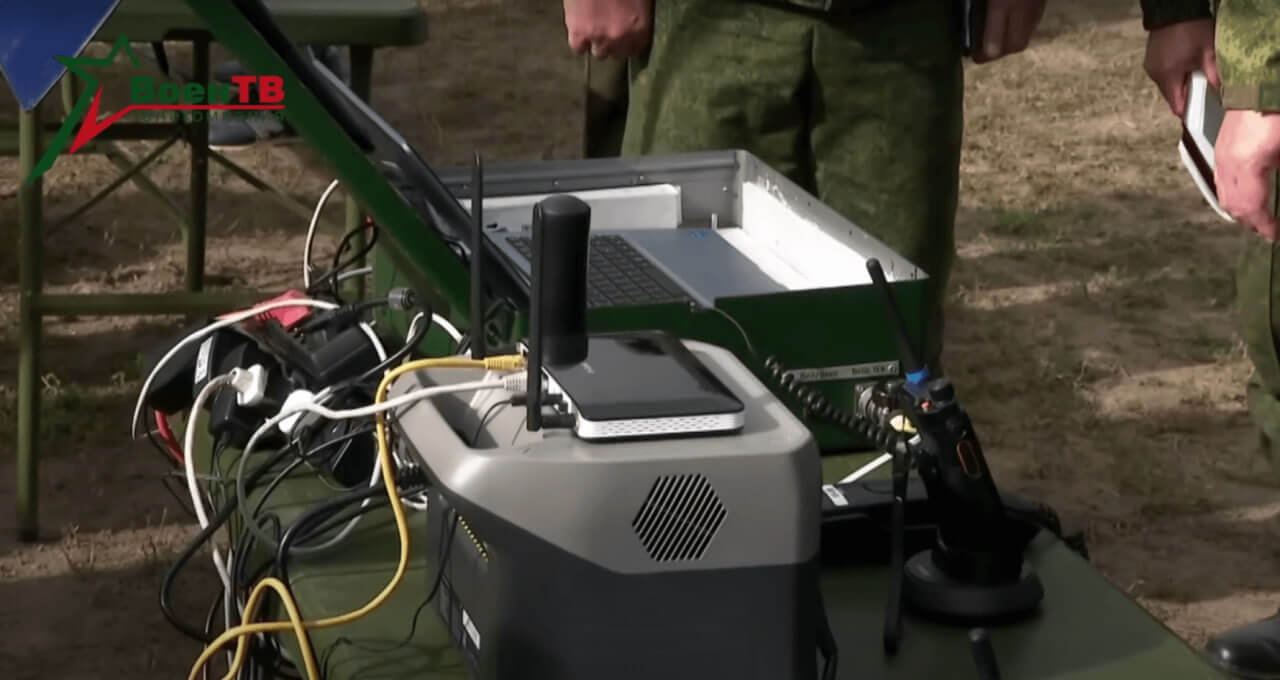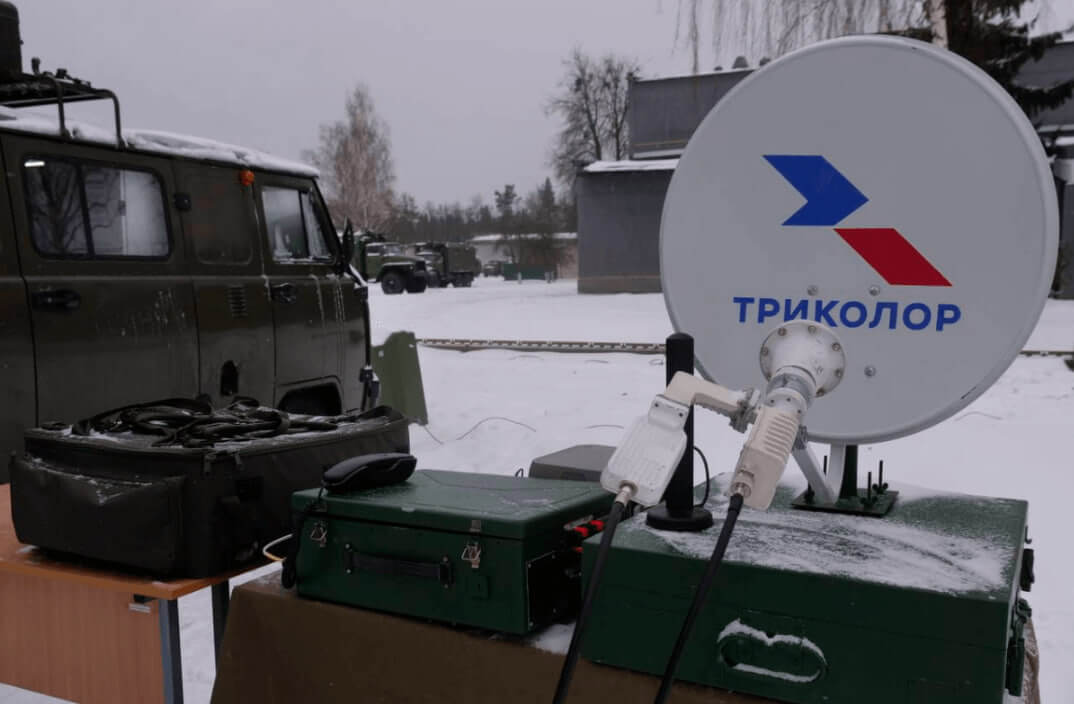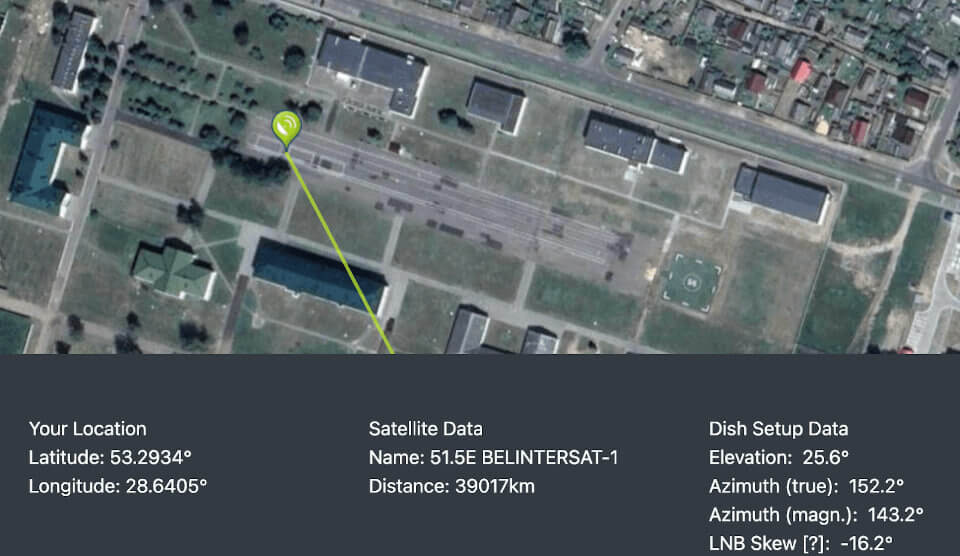No showing off
On October 6, 2023, during his visit to a site of the Khrenin’s Line – a stronghold near Saki village in Zhabinka district of Brest region – Lukashenka was shown, among other things, a tactical mobile communication system developed at the 619th base for storage, repair, modernization and disposal of communication equipment (Asipovichy). Here’s more about the system, which Lukashenka called “Musk’s free analogue.”
What did they show Lukashenka?
Images from the presentation of the mobile communication system then caused a lot of ridicule in the Belarusian and foreign media both about the appearance of the equipment and about the dialogue between Lukashenka and an officer with a pointer. Here are the words of this conversation:
–What Musk did for billions of dollars, did you do it yourself for free?
– Yes, but not for free. But for very little money.
– Yeah, I get it. But not for billions of dollars?
– No, sir… There’s an Internet access point somewhere in Minsk. It broadcasts through a satellite station, comes out here. And you… Through a wi-fi router it distributes that Internet.

If there are no questions to Lukashenka’s competence at all, the officer explained everything correctly at the level of kindergarten (according to the level of the audience in front of him), although in his own words. Further we will tell you why.
First of all, in the video we see:
- Laptop in an iron army box;
- Wi-Fi router;
- 3G/LTE omnidirectional magnetic antenna;
- Radars connected to the laptop;
- Portable power supply from which the equipment shown is powered.
Obviously, the following didn’t get in the frame:
- Satellite dish;
- Satellite modem;
- 3G/LTE modem.
Without the last three points, this explanation could be considered ridiculous, but these elements are nevertheless present in the system. And it’s not so funny anymore.

Principle of operation
According to the developers, the mobile communication system, “provides data transmission, messaging, map operation, air data, and telephone closed communication” – in other words, it is basically a system of wireless Internet access and telephony with redundant mobile and satellite channels and local Internet distribution around the mobile communication system via Wi-Fi and wired network. The Supertel-NMS software package is responsible for the network configuration.
3G/LTE communication works in the coverage area of Belarusian cellular operators. The satellite part is based on the principle of traditional VSAT-internet with signal reception and transmission from one geostationary satellite.
The provider of satellite Internet for the Belarusian military is the Precise Electromechanics Plant, the operator of the National Satellite Communication and Broadcasting System and the Belarus-China satellite Belintersat-1/ChinaSat-15.

We should note that the military is allowed to use the two-way satellite channel (it can be seen from the converter installed in front of the dish), while individuals and legal entities in Belarus are allowed to use only the one-way satellite channel (i.e. for receiving), when the outbound traffic goes “on the ground”, through the Operations and Analysis Center and the SORM system, respectively. Exception – embassies of foreign states.
And here we could be happy for the military that they will finally be able to watch banned programs and find out the truth on the Internet. But the “Internet access point” from Lukashenka’s presentation, which is actually called “Teleport – Ground Control Complex,” is located in Stankava village (Dziarzhynsk district, Minsk region). I.e. all traffic from Belintersat-1 satellite rises from there and lands there, and then goes to the outside world via the ground network (via the Operations and Analysis Center and the SORM system, respectively). So there’s no banned stuff.
Comparison with Starlink
The new Belarusian mobile communication system is assembled in a rather home-made manner:
- Army iron laptop boxes and plywood boxes as a base for mounting a satellite dish bracket;
- Chinese transceiver converter;
- Dishes with the logo of the Russian Tricolor satellite TV operator.
Yes, the logo on the dish doesn’t affect its operation, but it shows that they couldn’t buy other dishes in Belarus, and the military-industrial complex doesn’t produce its own. Ironically, before the war, cheap and practical satellite dishes made in Kharkiv were widespread in Belarus.
But this equipment is quite a good option. For peacetime.

The obvious disadvantage of the mobile communication system is that the military needs to position this box base with a fixed dish manually to the satellite every time the system is deployed. Therefore, such a construction can hardly be called mobile.
In case of military actions on the territory of Belarus, the use of such a system may be significantly complicated. Because 3G/LTE mobile networks can be put out of operation on some territory just mechanically (base station towers are destroyed or de-energized, for example), while the satellite signal of one geostationary satellite – let us remind you that it is Belintersat-1 in the orbital position of 51.5°E with known frequencies of a limited number of transponders and their operating ranges– is exactly well suited to suppression by the enemy’s EW systems. As it was done by specialists from Ukraine with satellite broadcasting of NTV+ and Tricolor in 2022 and 2023 (satellite in position 36.1°E). As a result, these providers had to change the broadcasting frequencies of federal channels in their packages and transfer customers to the second satellite located much further east (56°E), depriving subscribers in the European part of Russia of some services.

The Belarusian military call one of the advantages of their development a more complicated process of detection of such a communication system in the radio spectrum. But it’s not quite true. In ordinary life, BelGIE detects the outbound signal of illegal users of the two-way satellite Internet with its radio control stations and fines them quite well. What about military specialists, who have the purpose to detect you? Especially, as emphasized above, when dealing with the geostationary system.
And there is only one source of Internet for the Belintersat-1 satellite. They could, for example, concentrate their efforts on disabling the teleport. And it doesn’t have to be physical.
The most vulnerable point of such a system is the so-called uplink channel of the teleport – the infrastructure with the help of which the control and useful signal from the ground control station is “lifted” to the satellite. Therefore, being in geographical proximity to the only teleport and having comparable equipment, it is possible to fill the broadcasting of only uplink channel with more powerful garbage signal, significantly slowing down the traffic to the satellite. In this case, users will have the illusion of network operation, but data exchange will be complicated.
At the same time, geographical proximity in case of Belintersat-1 means practically any point in Eastern Europe. In other words, there is no need to be on the territory of Belarus for such interference. And this is how, among other things, NTV+ and Tricolor were attacked (the teleport for Express-AMU1 36.1°E satellite is located in Dubna near Moscow, and the attack could have come from Ukraine).
Starlink, in addition to the aesthetic superiority and general compactness of the entire subscriber transceiver system, uses a phased antenna array with motorized automatic adjustment of the optimal tilt angle to the satellites instead of a satellite dish with a converter. That is, there is no need to orient it at all in space when moving. The antenna does everything for you.

Musk’s system uses a network of thousands of satellites, their frequencies are constantly changing. All this, among other things, complicates the detection of the place of use (installation) of the antenna on the ground, because the outbound signal also deviates over time (oriented towards the direction to the satellites with the best signal at the moment), and because of the principle of antenna operation, it is not so powerful and not so clearly focused to one point “in the sky.”
In addition, Starlink has teleports located in different parts of the Earth. And satellites in orbit retransmit the signal to each other, ensuring high fault tolerance of the entire system. At the same time, a Starlink user does not use a ground-based Internet channel or 3G/LTE communication in any way, as the network was originally designed as a satellite network.
And, as experience in combat operations in Ukraine shows, Russian invading EW forces have never been able to suppress Starlink’s operations over Ukraine over the past two years.
It is only possible to detect more or less effectively a concentration of wi-fi network users who cluster around a modem that is distributing satellite internet via wi-fi. But for this you need to be in sufficient proximity to such a modem with the risk of being discovered by the same users.
This is only a small and obvious part of the comparison, saying that it makes no sense in terms of the military capabilities of the two systems to make this comparison seriously.
- Is it possible to use the Belarusian mobile communication system? Yes.
- Is it cheaper than Starlink? Yes.
- Is it funny? Not really.
- Will it help the military? Unlikely.
Presentation in state media
The military propaganda of Belarus first proudly showed from all sides the procedure of transferring new communication systems to the troops on the territory of the 619th base (military unit 01313, Asipovichy).

By the way, here the military are enthusiastically touching a telephone receiver and a tablet, but the satellite dish is oriented in the opposite direction from the orbital position of the Belintersat-1 satellite. Let’s assume that at that moment they were setting up 3G/LTE communication.

Green color in the figure indicates the direction to Belintersat-1. Red – where the antenna of the military in the story is directed. Geolocation of the photo from the frame above is from the 619th base of storage, repair, modernization and disposal of communication equipment (Asipovichy).
At the same time, in another story of the Arsenal program of 10.12.2023, where they told about the transfer of equipment sets to the troops, they decided not to show these military.

But propagandists added even more mystery in the report of 08.12.2023 on the successful training on the organization of communication between units using the mobile communication system in the 51st Guards Artillery Brigade (military unit 12147, Asipovichy). For some reason they blurred the surrounding area.


The green color indicates the direction to Belintersat-1 and the approximate location of the military in the report. Here, visually, the military at least tried to tune in the direction to Belintersat-1 satellite. Now imagine how ‘convenient’ it is to do this in the forest in winter several times a day.
Belarus' ruthless EW
Colonel Ihar Danilchyk, the head of the Electronic Warfare Directorate of the General Staff of the Belarusian Armed Forces, told about the new EW means in the Belarusian Armed Forces 12.12.2023:
“And the range of these means will include a full nomenclature that will allow us to work in the radio frequency spectrum from 1 MHz to 6000 MHz. Short waves, ultra-short waves… We can affect any means of communication on the battlefield. We have no exceptions. We can work against all kinds of shortwave radio communications, cellular communications, Digital Mobile Radio, which everybody is using now. We can work against satellite communications systems, satellite navigation and so on. There is a possibility to work against Starlink. In general, I don’t know what communication systems we can’t work on.”
Here we will only comment from the editorial staff. The chief of the EW Directorate can masterfully confuse the potential enemy by the complexity of his thoughts, not always coinciding with reality. We just recall about the teleports mentioned above, as well as about the completely different frequency range of both Starlink and their own Belintersat.
P.S. Belarus is in the coverage area of the Starlink network, but the possibility of using the transmitting equipment is blocked by the developer of the system on geographical grounds (when turning on, the modem will determine its location and stop working).
